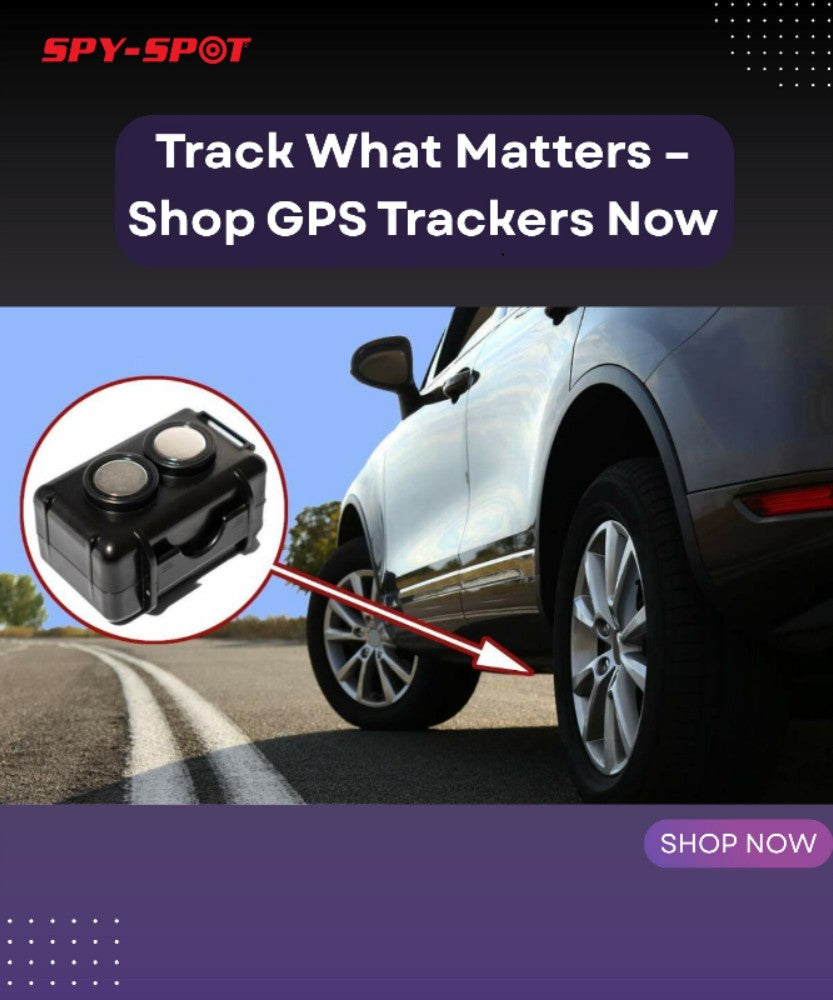Modern policing is evolving fast, powered by smart, data-driven technology every day. One of the biggest game-changers is the use of GPS tracking by law enforcement.
Today, almost every police department uses some form of GPS tracker or locator. These small GPS devices provide real-time information that transforms police operations entirely.
Police officers now rely on GPS technology to manage patrol cars and resources. They can monitor police vehicles, track suspects, or coordinate large-scale responses easily.
When an emergency happens, GPS tools instantly alert teams to move faster. Tracking systems also help police departments cut down on dangerous, high-speed car chases during arrests.
Simply put, GPS use helps law enforcement stay proactive, alert, and coordinated. When applied ethically, it strengthens public trust and sharpens police readiness.
Let’s discuss how police use GPS, how law enforcement applies GPS tracking devices, and where checks and balances must apply.

The Evolution of GPS Use in Law Enforcement
Well, after the advent of GPS technology, it wasn’t all smooth sailing for usage in law enforcement. Here’s how GPS was introduced and evolved in law segment:
From Military Tech to Police Tools
Originally, GPS tracking began as military and navigation systems. Over time, police departments adapted this GPS use for law enforcement tasks.
Early police use GPS focused on police car tracking and fleet management; known also as asset tracking. These systems helped departments know where their vehicles were at all times.
Turning Point: Surveillance & Covert Tracking
As technology improved, GPS tracking devices became smaller and thus making it easier to attach. This made it possible to monitor suspect vehicles without detection.
Police use GPS in investigations by attaching a GPS device covertly to targets. That shift allowed longer, unobtrusive tracking in criminal cases.
Legal Milestones
Court rulings shaped how law enforcement can use GPS tracking. In the United States v. Jones (2012), the U.S. Supreme Court ruled that placing a GPS device without a proper warrant violates the Fourth Amendment.
That decision changed how police approach GPS-based surveillance legally. But earlier cases like United States v. Knotts allowed some tracking without warrants, if visual surveillance was also used. Legal evolution has balanced police obligations with citizens’ privacy rights.
How Police Use GPS Tracking Today
Let’s break down the primary ways police departments employ GPS tracking devices in modern operations.
Vehicle Fleet Management & Patrol Cars
Tracking is not only for suspects; police use GPS in their own police vehicles too. Each patrol car can be fitted with a GPS tracker for real-time route monitoring.
Dispatch centers see live positions of each police car, and can assign calls efficiently. Fleet data also helps supervisors monitor patrol patterns and resource use.
Criminal Investigations & Surveillance
One of the most powerful uses is covert surveillance of suspects. Police officers may attach a GPS device to a target vehicle or asset.
From there, GPS tracking devices yield location logs and movement patterns. This helps gather evidence, confirm suspect timelines, or flag suspicious detours.
Because tracking is discreet, it complements physical surveillance or wiretaps. But such deployments require caution: police must usually secure a warrant before covert installation.
The law distinguishes between overt and covert tracking in public vs private property. Where GPS helps police is in chronicling behavior over hours or days.
It’s harder for suspects to avoid tracing when movement is tracked continuously.
Emergency Response & Public Safety
GPS locators help in fast-moving emergency scenarios too. Dispatchers can direct officers to the exact location of a 911 caller.
During manhunts or active crimes, real-time tracking aids coordinating multiple units. In mass casualty or disaster zones, GPS helps allocate resources dynamically.
Parole & Offender Monitoring
Outside crime scenes, GPS technology assists in parole and probation oversight. Offenders on parole may be required to wear GPS bracelets or ankle monitors.
These devices issue alerts if the person enters excluded zones or tampers with equipment. That is a form of tracking technology that supports prevention and compliance.
Even foot patrols and special units use tracking to avoid gaps in coverage. It helps law enforcement monitor those under surveillance without constant physical checks.
The Technology Behind GPS Tracking Devices
It’s important to understand how GPS tracking devices work. Because this knowledge will helps us see their power and limits.
Active vs Passive Trackers
-
Active trackers transmit location in real time, useful in chases or surveillance.
-
Passive trackers log data internally and upload it when retrieved or accessed.
-
Active systems require cellular or satellite links; passive may not.
Satellite Communication & Signal Flow
GPS devices use satellites to determine positions. Then they relay data via cellular or radio links to law enforcement servers. This enables real-time information flow to command centers.
Geofencing, Alerts & Analytics
Modern trackers support geofencing; setting virtual boundaries. If a vehicle exits or enters that boundary, officers get alerts.
Tracking technology also produces movement heatmaps and path analytics. That analytics data aids helping law enforcement detect unusual behavior or patterns.
Integration with Police Systems
Tracking data links into police CAD (computer aided dispatch) systems. It also ties into video cameras, databases, and mapping layers.
This integrated environment makes GPS usage seamless for daily operations. Thus, police departments see all assets, vehicles, and movements in a unified map.
Case Studies: Real Scenarios Where GPS Helped Police
To bring theory into real-life, here are examples of police using GPS tracking technologies in action.
Car Chases & Pursuit Prevention
Rather than chase dangerously, police sometimes deploy trackers from moving vehicles. Some agencies use magnetic or adhesive GPS locators launched onto suspect cars.
These devices transmit location, allowing pursuit teams to follow remotely. One recent case involved a GPS tracking dart attaching to a fleeing vehicle mid-chase.
Such strategies reduce speed risk and support safer police tactics.
Parolee Monitoring & Recidivism Control
When individuals are on parole, GPS tracking helps compliance. Authorities configure systems so roaming beyond approved zones sets off alerts.
That helps local police intervene before criminal re-engagement. Hence GPS use aids supervision without physical footwork round-the-clock.
Theft Investigations & Stolen Assets
GPS trackers inside stolen cars help police recover property. Tracking reveals location, direction, and movement timing for investigators.
In one case, police placed a discreet tracker in a stolen vehicle’s undercarriage. They followed it for hours, then intercepted it at a remote storage lot.
Emergency Rescue & Missing Persons
Tracking logs served as evidence in court, corroborating suspect confessions. GPS use even aids non-violent scenarios. Local police can track vehicles linked to missing persons or victims.
GPS locators notify when a suspect vehicle moves outside permitted areas. That data helps narrow search zones and accelerate rescue efforts.![]()
Legal & Ethical Concerns Around Police GPS Use
While powerful, GPS tracking by police raises critical questions around privacy rights, oversight, and legality.
Constitutional Protections & Warrants
Courts have repeatedly held that covert GPS tracking qualifies as a “search.” Hence, police must generally obtain a warrant before attaching a GPS device.
In the United States v. Jones, the Supreme Court affirmed that warrantless installation violates the Fourth Amendment.
That case forced law enforcement to prioritize cause and judicial approval before tracking. Some exceptions exist; emergencies or hot pursuit; but they’re narrowly construed by courts.
Privacy & Surveillance Risks
Continuous tracking can reveal highly private information; where you live, work, worship. Without checks, police use GPS could drift toward mass surveillance.
Safeguards like data minimization, audit logs, and retention limits become essential. Public trust depends on transparency about how and when GPS is used.
Case Law Nuances
Some earlier rulings permitted limited GPS use without warrants (e.g. Knotts). Other circuits initially allowed warrantless devices (e.g. United States v. Garcia).
Yet Pineda-Moreno and later the Supreme Court changes reaffirm the warrant requirement. So, legal ground constantly evolves, pushing departments to adapt tracking technology practices.
Ethics & Oversight
Even valid warrants don’t solve all concerns: Who accesses the GPS data? How long is it stored? Who audits the usage to guard abuse?
Departments must craft policies that balance investigative needs against civil rights. Otherwise, legitimacy and public confidence can erode quickly.
Benefits of GPS for Police Departments
Despite challenges, GPS use offers many advantages that make policing more effective. Here are some perks to look out:
Faster, Smarter Response
Real-time location data speeds dispatch to incidents. Officers closest to a scene arrive faster, reducing response times.
Increased Accountability
GPS logs show where police officers have been and what routes they took. This transparency helps manage misconduct or inefficiency in police departments.
Operational Efficiency
Tracking vehicles and assets prevents duplication and optimizes deployment. Also reduces fuel costs and wear by smarter route assignment.
Stronger Evidence
GPS logs are admissible in court when properly collected. They can confirm suspect routes, timestamps, and location consistency.
Officer Safety
During pursuits and car chases, GPS helps coordinate backup. Knowing positions of units reduces risk and helps manage tactics.
Pro Tip: Many departments overlay GPS with body camera streams for synced evidence.
Challenges and Limitations of GPS Tracking
No technology is perfect; GPS tracking faces hurdles in real deployment. Let’s have a closer look at some challenges and limitations of GPS tracking!
Signal Disruptions
Terrain, tunnels, dense buildings, or jamming devices degrade GPS device performance.
Legal & Administrative Hurdles
Obtaining fast warrants can delay time-sensitive operations. Some small local police agencies lack legal or technical support for full tracking.
Ethical Pushback
Citizens may perceive GPS tracking as intrusive or authoritarian. Maintaining community trust requires rigorous policy and communication.
Cost & Maintenance
Tracking terminals, subscriptions, and data infrastructure cost money. Old vehicles or assets may not integrate easily with tracking upgrades.
Data Overload
Collecting massive logs demands storage, filtering, and meaningful analysis. Without proper tools, GPS data becomes noise, not leverage.
The Future of GPS & Policing
What lies ahead as police use GPS tracking evolves further?
AI & Predictive Analytics
Machine learning may predict crime hotspots by analyzing GPS movement patterns. Predictive policing could flag suspicious travel patterns before crime happens.
Drone & Aerial GPS Integration
GPS tracking on drones and aerial systems aids ground units in real time. This merges line-of-sight with remote tracking technology.
Enhanced Real-Time Alerting
Systems will push automatic alerts to officers during boundary breaches. Smart triggers might detect erratic driving or suspicious stops mid-route.
More Transparent Policies
Communities will demand clearer policies on how police use GPS responsibly. Public dashboards and oversight bodies may become standard.
Privacy-First Tracking
Future devices may anonymize or blur data not relevant to investigations. Governments may legislate stricter limits on retention, audit logs, and access.
Conclusion
GPS tracking has transformed how police departments operate; from reaction to prevention.
When done properly, attaching a device or using GPS locators can help police catch criminals, save time, and allocate resources.
Yet power demands restraint. Police must balance helping law enforcement with protecting privacy rights. Warrant standards, policy controls, and community input must guide every step.
As GPS integrates further into police vehicles, patrol cars, and surveillance, it becomes a backbone for modern policing.
The future of tracking belongs to agencies that deploy GPS tracking transparently, ethically, and with public trust.




